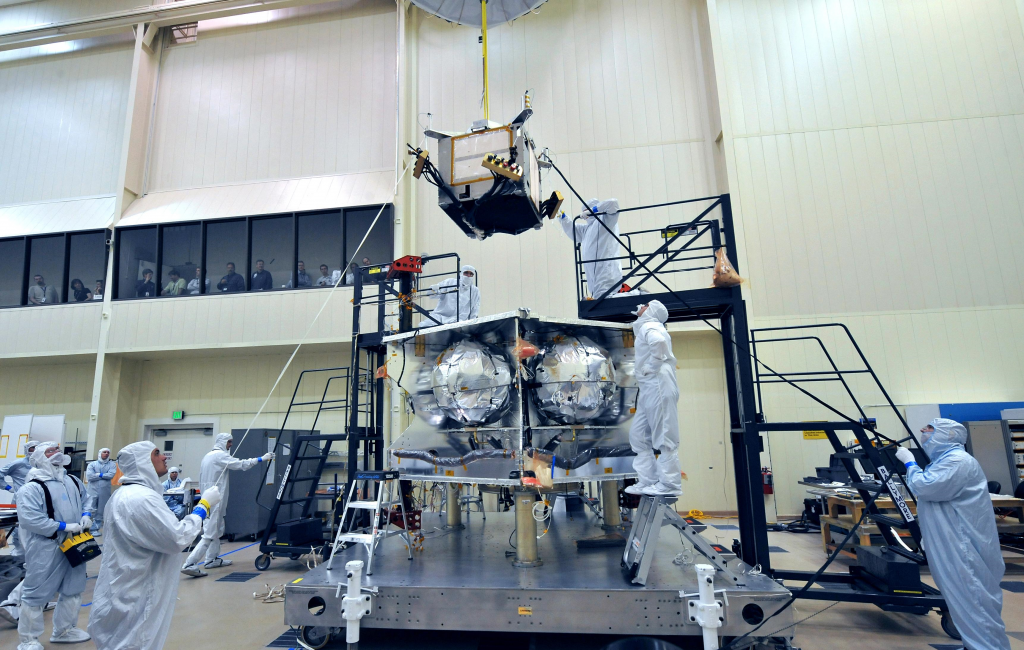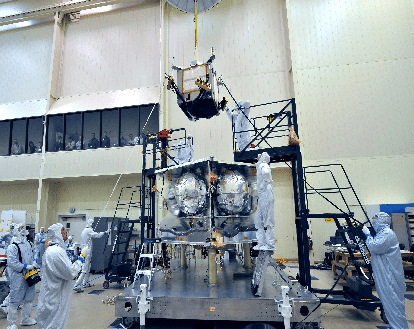
(July 4, 2016) Launched from Earth in 2011, the Juno spacecraft performed a successful orbital burn July 4th and will study the giant planet from an elliptical, polar orbit. Juno will repeatedly dive between the planet and its intense belts of charged particle radiation, coming only 5,000 kilometers (about 3,000 miles) from the cloud tops at closest approach.
According to NASA, Juno’s primary goal is to improve our understanding of Jupiter’s formation and evolution. The spacecraft will spend a year investigating the planet’s origins, interior structure, deep atmosphere and magnetosphere. Juno’s study of Jupiter will help us to understand the history of our own solar system and provide new insight into how planetary systems form and develop in our galaxy and beyond.
Pictured is the installation of the special radiation vault, which contains the science and electronics control payload. The radiation vault has titanium walls to protect the spacecraft’s electronics from Jupiter’s harsh radiation environment. The vault will dramatically slow the aging effect radiation has on the electronics for the duration of the year-long mission.
NASA’s Jet Propulsion Laboratory, a division of the California Institute of Technology, Pasadena, is managing the Juno mission for the principal investigator, Scott Bolton, of Southwest Research Institute, San Antonio. Lockheed Martin Space Systems is building the spacecraft. The Italian Space Agency, Rome, is contributing an infrared spectrometer instrument and a portion of the radio science experiment.
For more info, click here.
